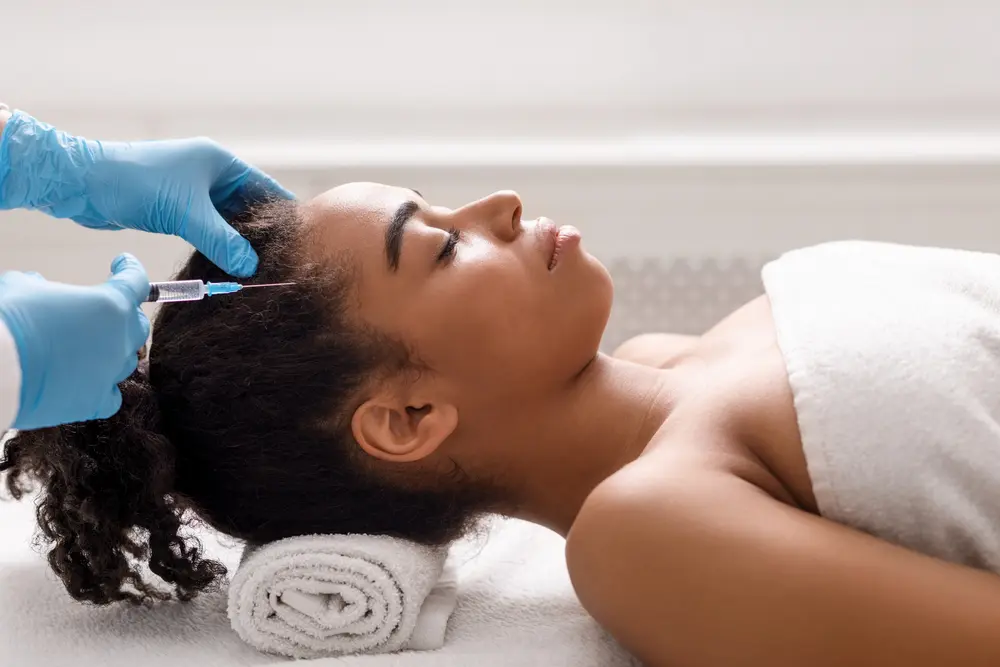Balding is a condition often associated with men, but it significantly affects women as well. For many women, the realization that they are losing hair can be a distressing experience, impacting their self-esteem and emotional well-being. Understanding the underlying causes is crucial not only for treatment but also for prevention and management. This article explores the five primary reasons why many women experience balding, providing insights and advice to help manage this challenging condition.
1. Genetic Factors
Genetic predisposition plays a pivotal role in female hair loss, commonly referred to as female pattern baldness or androgenetic alopecia. Unlike men, where the loss usually occurs in specific areas like the temples or crown, women tend to experience thinning hair across the entire scalp. This genetic trait can be inherited from either parent, and its manifestation may vary greatly from one individual to another. Early detection and treatment can help manage this type of hair loss, preserving hair density and scalp health.
2. Hormonal Changes
Hormonal fluctuations are a significant contributor to balding in women. Various stages of a woman’s life, such as pregnancy, menopause, and periods of hormonal imbalance, can trigger hair thinning. For instance, during menopause, the reduction in estrogen and progesterone can lead to weaker hair growth and noticeable hair loss. Similarly, post-pregnancy hormonal changes can cause temporary hair thinning known as telogen effluvium, which usually resolves itself in time. Understanding these patterns can provide reassurance and guide effective management strategies.
3. Medical Conditions
Certain medical conditions can lead to significant hair loss in women. Thyroid disorders, for example, often cause hormonal disruptions that affect the hair growth cycle. Autoimmune diseases like alopecia areata trigger the body’s immune system to attack hair follicles, leading to patches of baldness. Other conditions such as lupus and anemia also contribute to hair loss. Early diagnosis and treatment of these underlying conditions are crucial for controlling hair loss and promoting regrowth.
4. Nutritional Deficiencies
Nutrition plays a critical role in maintaining healthy hair. Deficiencies in key nutrients such as iron, zinc, and vitamins D and B12 can lead to weakened hair structure and increased hair loss. Women are particularly susceptible to iron deficiency due to menstrual cycles and less meat consumption. Ensuring a balanced diet rich in essential vitamins and minerals can help maintain hair health and reduce the risk of balding. Supplements may also be recommended in some cases to address specific deficiencies.
5. Stress and Lifestyle Factors
Chronic stress and high-pressure lifestyles can significantly impact hair health. Stress can disrupt the normal hair growth cycle, pushing more hairs into the shedding phase. Additionally, lifestyle choices such as poor diet, inadequate sleep, and lack of exercise exacerbate this problem. Managing stress through techniques like meditation, yoga, and regular physical activity can improve overall well-being and help mitigate hair loss.
Embracing the Challenge: Managing Balding in Women
Balding in women is indeed a complex and multifaceted issue, driven by genetic, hormonal, medical, nutritional, and lifestyle factors. Early recognition of the signs and a deep understanding of the underlying causes are essential steps towards effective management of this condition. Women experiencing hair loss often face not just physical symptoms, but emotional and psychological impacts as well. It is crucial, therefore, to seek the advice of healthcare professionals who can offer treatment options that are specifically tailored to individual needs and conditions.
Consulting with experts can lead to personalized treatment plans that address both the symptoms and the root causes of hair loss. This could include hormonal therapies, nutritional adjustments, or even stress management techniques depending on the individual diagnosis. Furthermore, embracing a community or support group where experiences and tips can be shared is invaluable. Knowing you are not alone can provide a significant emotional boost and motivate you to adopt a proactive approach to managing your hair health.
Embracing these challenges with a proactive and positive outlook is not just about finding the right treatment — it’s also about adjusting lifestyle choices and mindset to foster overall well-being. The journey to overcoming female balding can be transformative, encouraging women to take control of their health and appearance with confidence and resilience. Remember, managing hair health, despite being complex, is entirely possible with the right strategies and support.
This story was created using AI technology.











One Response
I have lost just about all my hair it does mess with self esteem. I wish I could get hair back.